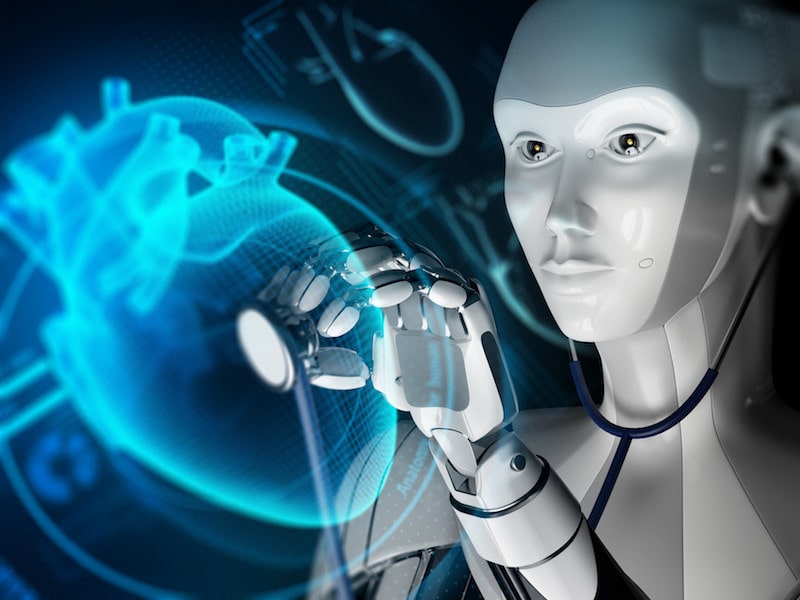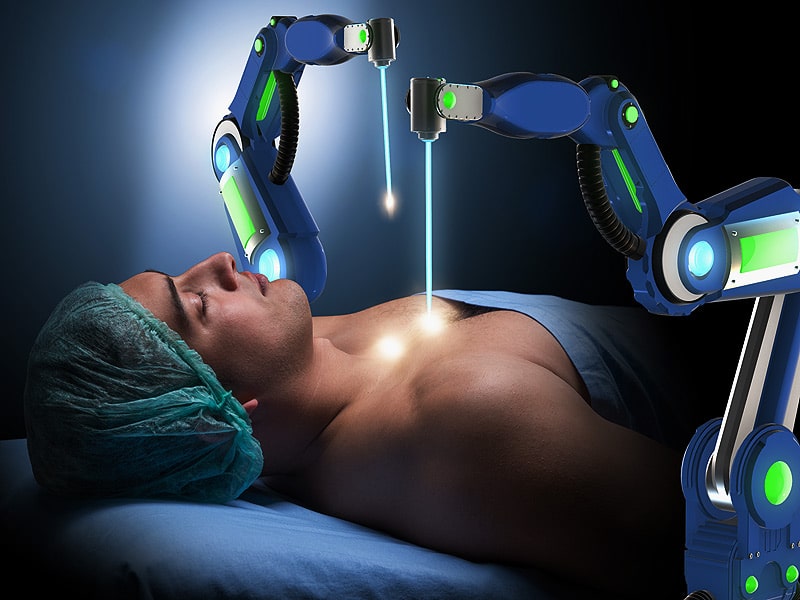
How robotics change medicine
While there are many medically-oriented applications for robotics, the long-term prospects for their use are not obvious. Many industries understand the impact of robotics – and medicine is no exception.
Although the introduction of this technology into medicine is slower than in other industries, the impact can be enormous: robotics in medicine can help reduce human error, shorten recovery times and shorten hospital stays, ultimately improving the quality of life for patients.
The first medical robotic application appeared in 1985. Then the robotic surgical arm helped biopsy neurosurgery. Fifteen years later, the first fully FDA approved system (known as the da Vinci surgical system) for laparoscopic surgery appeared. The system allowed surgeons to control the surgical procedures indirectly through the console.
Today, companies are using advances in this technology to develop new robotic medical applications of the future, including those related to bionics, disease detection and rehabilitation.
ORTHOPAEDIC ROBOTS
When it comes to surgery, robotics is mainly a high-tech surgical assistant that can help doctors perform minimally invasive surgery – especially in hard-to-reach areas. Most of these systems are FDA approved and are classified as a surgical assistant robot (RAS). They allow surgeons to operate with a console that controls the surgical arms, cameras and other instruments directly involved in the procedure.
The use of RAS systems leads to a reduction in the size of incisions, reducing the likelihood of blood loss and infections, reducing pain and complications in patients. Given these advantages, surgical robotic systems have been widely used in the last decade.

ORTHOPAEDIC REVOLUTION
RAS systems are ready to have a significant impact on orthopedics as well. This “robotic revolution” began in earnest at the end when medical technology firm Stryker bought Mako Surgical, a manufacturer of knee and hip replacement devices.
The Mako system can create a 3D model of the joint based on a CT scan, allowing the surgeon to plan for each individual patient in advance. The model is loaded into the system and corrected if necessary. Afterwards, the robotic arm sets the angle and plane of the surgical saws and prevents cuts that are too deep.
Since the potential is obvious, the arms race in orthopedics continues. And some of the largest companies in the industry are working to create more efficient and smaller devices to help surgeons and improve results, while being more cost-effective.
The number of knee and hip surgeries is growing and represents one of the most promising markets for robotics – especially for smaller, less expensive robots that can be used for outpatient surgery. This option is more cost effective than staying in a hospital.
PRE- AND POSTOPERATIVE VISUALIZATION
The technology allows doctors to develop a plan for each prosthetic operation from pre-operative planning to postoperative evaluation. Currently, 500 institutions are using this technology.
By combining systems and workflow technology with robotic devices, Smith & Nephew aims to expand capabilities beyond knee operations and plans to open a research and development center in Pittsburgh for artificial intelligence, machine learning with robotic systems.
REMOTE SURGERY
Another interesting development in robotic surgery is the ability of doctors to perform minimally invasive procedures remotely.
The first complete remote operation was performed when a New York surgeon used the Zeus robotic surgical system to remotely remove a gallbladder from a patient in France. Since then, many companies have discovered the field of “tele-surgery”, but this technology is not currently being developed.
DISEASE DETECTION ROBOTS
X-rays changed medicine, offering doctors a powerful tool to help them diagnose diseases and injuries. Recently, technologies such as ultrasound, CT and MRI have allowed physicians to identify diseases and make new discoveries.
Today, many researchers are looking for developments for the next big breakthrough: the creation of microscopic bots that can travel inside the human body, or robots to diagnose diseases, detect anomalies or identify potential patients at risk.
ROBOTS THAT YOU CAN SWALLOW
The capsule endoscopy was approved by the FDA and has been in use. The procedure involves placing a tiny camera inside a tablet-sized housing. The “pill” is swallowed by patients, and as it passes through the gastrointestinal tract, the camera takes pictures that doctors can use to determine if there are abnormalities.
Although it is a relatively easy way to examine the inside of the gastrointestinal tract, doctors depend entirely on how the pill passes through the patient’s system. They can’t control the movement of the tablet yet and what pictures are taken. There is a new technology that allows doctors to control the movement of the pilbot with a remote control.
The microbot tablets she developed will allow doctors to control its movement by examining specific areas, as opposed to passive movement on the body. This implies a new level of diagnostic capability. If the technology is successful, other potential applications, including the use of micro robots to perform biopsies or deliver drug treatments to specific areas of the body, will be used.
